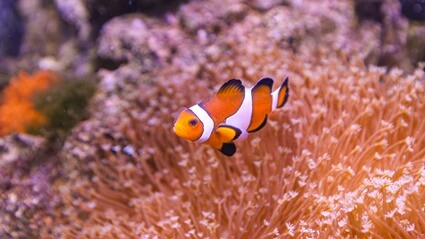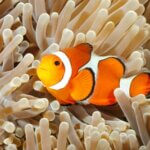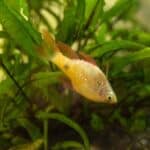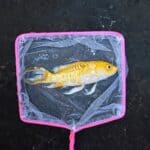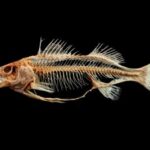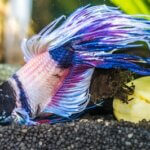The relationship between clownfish and anemones is among the most recognizable forms of marine mutualism. How clownfish befriended the dangerous, carnivorous anemone is revealing.
Clownfish are immune to anemones due to an external layer of mucus. This layer protects clownfish from the stinging tentacles of anemones. There’s microbial sharing between them.
This explains why anemones don’t bother eating clownfish since they share bacteria.
As there’s so much research regarding what clownfish get out of the relationship, little is known about how clownfish assist anemones.
A closer look gives us vital insight into how crucial clownfish are in the lives of the flowers of the sea.
Why Don’t Anemones Sting Clownfish?
Clownfish avoid getting stung by anemones due to a coating of mucus that makes them invulnerable to their stings. Due to this mucus layer, clownfish can live in sea anemones without harm.
Anemones are living animals that must eat and protect themselves.
Like all living creatures, anemones have defense mechanisms to ward off predators. One of the ways sea anemones defend themselves is with harpoon-like stingers called nematocysts in their tentacles.
They sting any fish that comes near, paralyzing them to make them easier to capture and eat. Anemones are carnivorous, so they’re dangerous to any fish that comes in contact with them.
How are clownfish not affected by the nematocyst? Clownfish are born with a protective mucus layer.
Most fish have a similar protective layer (which is why they’re slimy), but clownfish have a mucus layer much thicker than other fish.
According to the Royal Society, clownfish are born with this protective mucus layer, which thickens when they come into contact with anemones.
Why Don’t Anemones Eat Clownfish?
Anemones don’t eat clownfish because they don’t consider clownfish invasive. Other fish see anemones as food, so they swim toward the tentacles despite the danger.
The anemone will paralyze and poison the attacking fish with its nematocysts to protect itself. As anemones are carnivorous and need to eat, they’ll take advantage of the fish’s paralysis.
Even though clownfish nibble on anemone tentacles, the anemones don’t attack because they don’t see it as a threat. Even if they did, the mucus layer makes clownfish invulnerable to the nematocysts.
The reason clownfish don’t need to eat anemones is shared bacteria.
It was once believed that direct contact was all that was needed for a clownfish and anemone to exchange bacteria as they acclimate to each other.
Researchers at Laval University demonstrated how the microbiome of a clownfish changes even without direct contact with an anemone.
Through proximity to anemones, juvenile clownfish can acclimate to the anemone before it comes into contact. The change in the microbiome signals it isn’t food and offers protection.
Whichever it is, it allows the clownfish to approach the anemone and begin hosting it.
How Do Sea Anemones Benefit from Clownfish?
Sea anemones rely on clownfish. Clownfish defend anemones from other fish, help them get sunlight exposure, and provide fertilizer.
Even though anemones have effective ways to protect against other fish, they’re still at risk of getting eaten. Sea stars, snails, and butterflyfish consume anemone tentacles.
If the anemone had most of its tentacles damaged by fish, it wouldn’t be able to sting an attacking fish.
When fish see that a clownfish hosts the anemone, they’ll retreat. They have enough grit in their tiny bodies to bite human divers that get close to their anemones.
No matter how big the intruder is, they’ll show aggression when it’s time to defend their home.
Seaweed grows tall all around sea anemones. The seaweed creates shade and blocks sunlight. Anemones need sunlight to stay healthy. Without proper lighting conditions, they die.
Even though anemones can move and swim, if the seaweed density is too great.
They’ll have trouble relocating to an area with more sunlight. Clownfish eat the seaweed that grows around anemones and ensure that there is always enough sunlight.
Clownfish provide anemones with fertilizer.
Because the clownfish often scare other fish away, the anemones must find another way to eat. Clownfish defecate around the anemone and provide it with nutrients that help them grow.
How Do Clownfish Benefit from Sea Anemones?
Sea anemones help clownfish survive by providing shelter and food. Although clownfish are highly territorial, no amount of aggression can protect them from larger sea creatures.
From an evolutionary standpoint, it’s also inconvenient to fight for your life every other day. Like most creatures, clownfish seek shelter to protect themselves and their eggs.
Due to their tentacles, anemones make good homes for clownfish. If any dangerous fish approach, they’ll get stung and poisoned by the anemone.
Clownfish have various ways of eating from the anemone. One way is by eating anything left over from fish the anemone devours.
They also nibble on the anemone’s tentacles. Due to the shared microbiome, this is non-threatening.
Why Do Clownfish Rub Against Anemones?
Clownfish rub themselves against anemones as part of the pairing process. It means clownfish and anemone are preparing for a long, beneficial relationship.
Before a clownfish hosts an anemone, it isn’t always ready to live in it.
Although clownfish have a protective mucus that is thicker than the average fish, they still need to thicken it more in preparation for permanently living in an anemone.
Rubbing against anemones causes a chemical reaction that helps thicken the protective mucus layer.
It also helps the anemone get used to the clownfish and sees it as less of a threat. Think of it like two dogs sniffing each other as a way to get to know each other better.
According to the Georgia Institute of Technology, the effects of rubbing against an anemone aren’t permanent for clownfish. Upon separation, the microbiome of clownfish resembled a non-hosting fish.
Are Clownfish Immune to Jellyfish?
Clownfish aren’t immune to jellyfish stings. They may be slightly more resistant to it than other fish, but they can still get hurt and die if shocked by jellyfish.
The reason clownfish are immune to anemone stings and not jellyfish stings is that jellyfish stings are stronger. Anemone stings can hurt, but the sensation can range from a slight pinch to a mild burn.
Not all jellyfish stings are fatal. Some can be as mild as anemone stings. There are some jellyfish species capable of distributing severe damage—enough to leave adult humans sore and sick for days.
Clownfish rarely stray far from home, so the chances of getting stung by a jellyfish are low.
Clownfish can become resistant to jellyfish if they can acclimate to them like anemones. Given how convenient the clownfish-anemone relationship is, they don’t rely on jellyfish for survival.
Are Clownfish and Anemone Relationships Mutualism or Commensalism?
The relationship between clownfish and anemones is considered mutualism. Mutualism is when two species form a relationship where both benefit from each other.
The relationship between clownfish and sea anemones is one of the best cases of mutualism between marine animals. Both benefit from each other and acclimate to each other without problems.
Clownfish and anemone relationships can’t be considered commensalism. This is a symbiotic relationship in which only one species benefits while the other is unaffected or harmed.
It’s an entirely one-sided relationship, which isn’t the case for clownfish and anemones, given how co-dependent they are on one another.
A good example of commensalism between marine creatures is the relationship between remora (suckerfish) and large sea creatures. Remoras cling to the bodies of sharks, whales, and turtles.
They use the animals to move around and protect themselves from predators by associating with larger animals. This relationship is commensalism because whales and sharks don’t need remora to survive.

